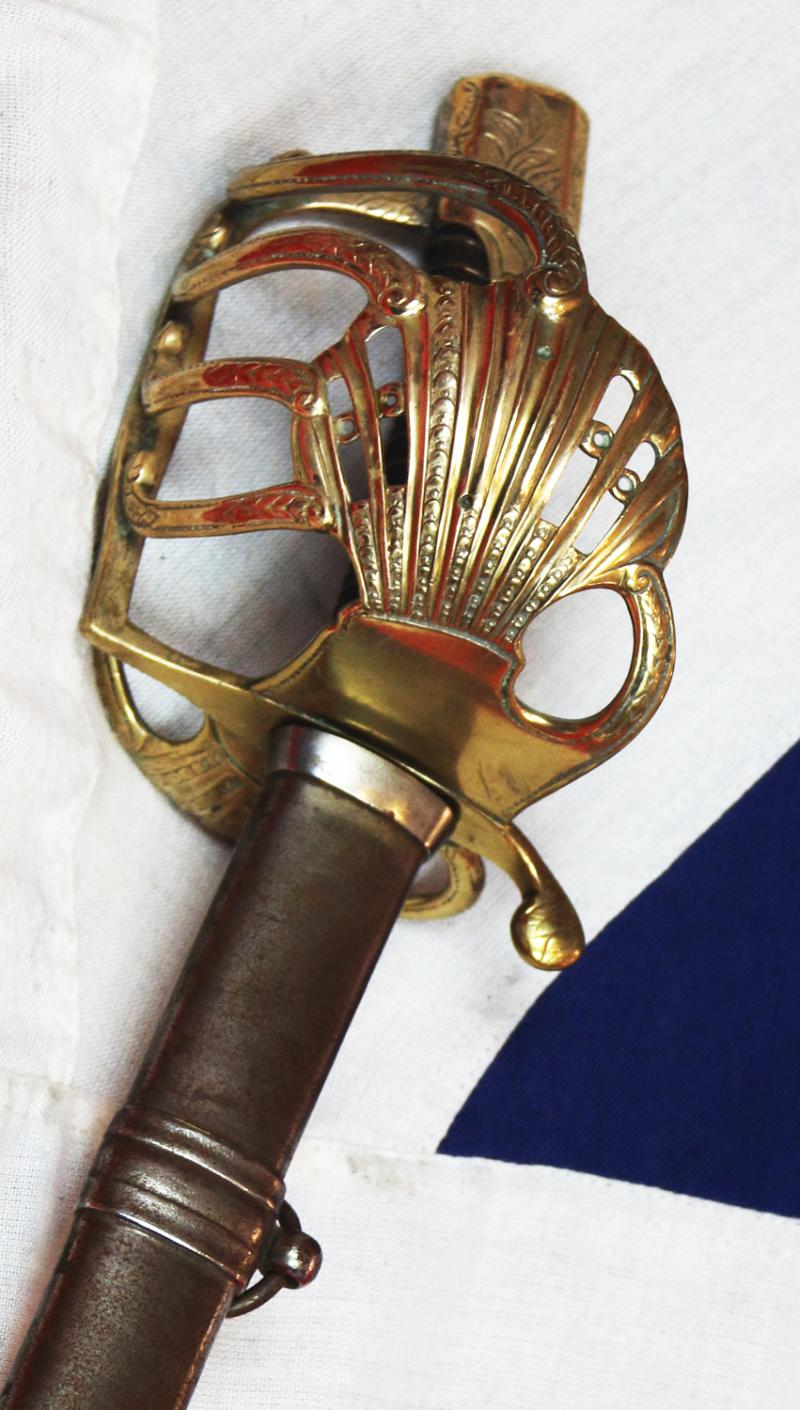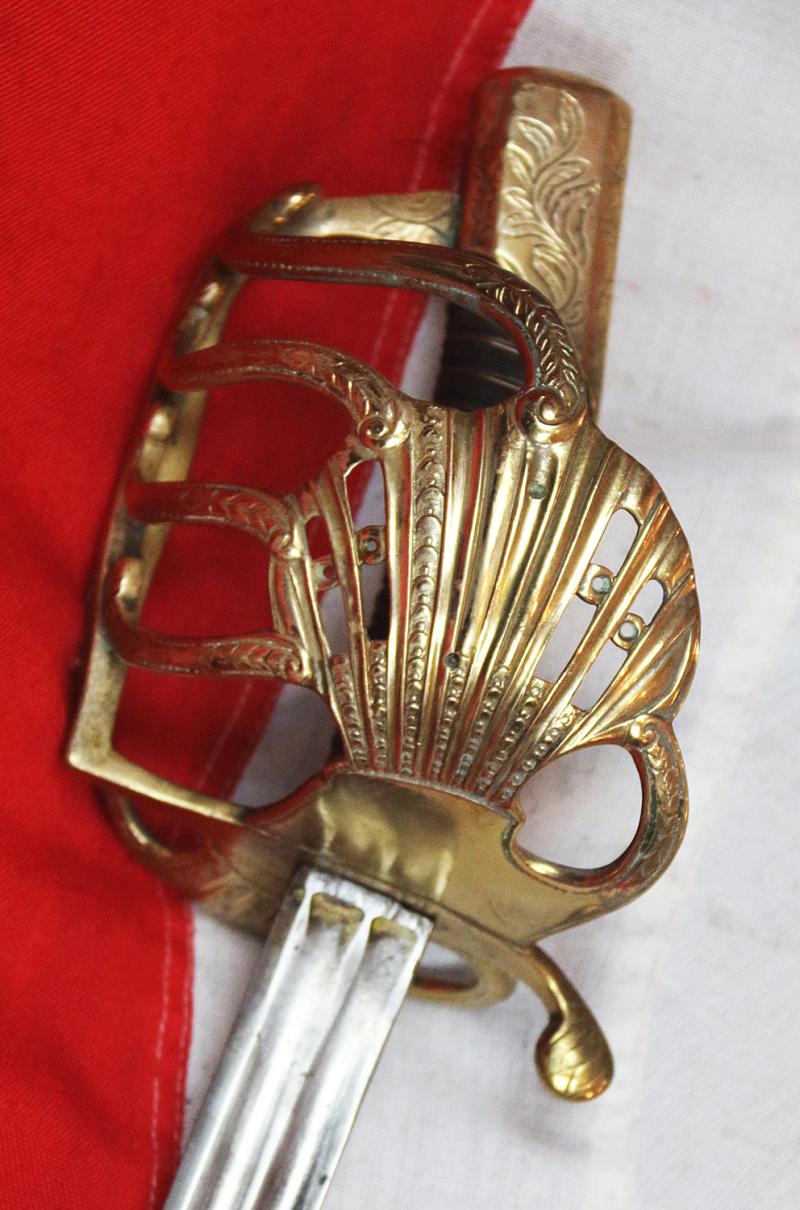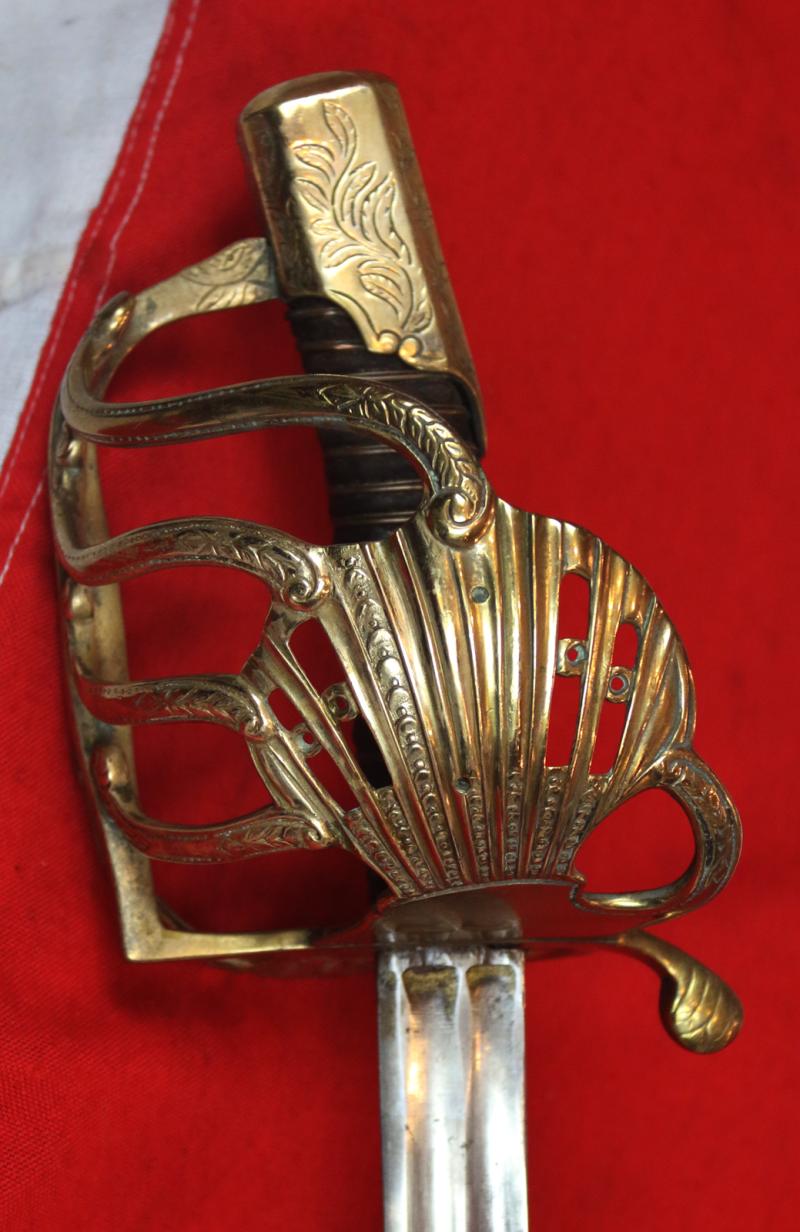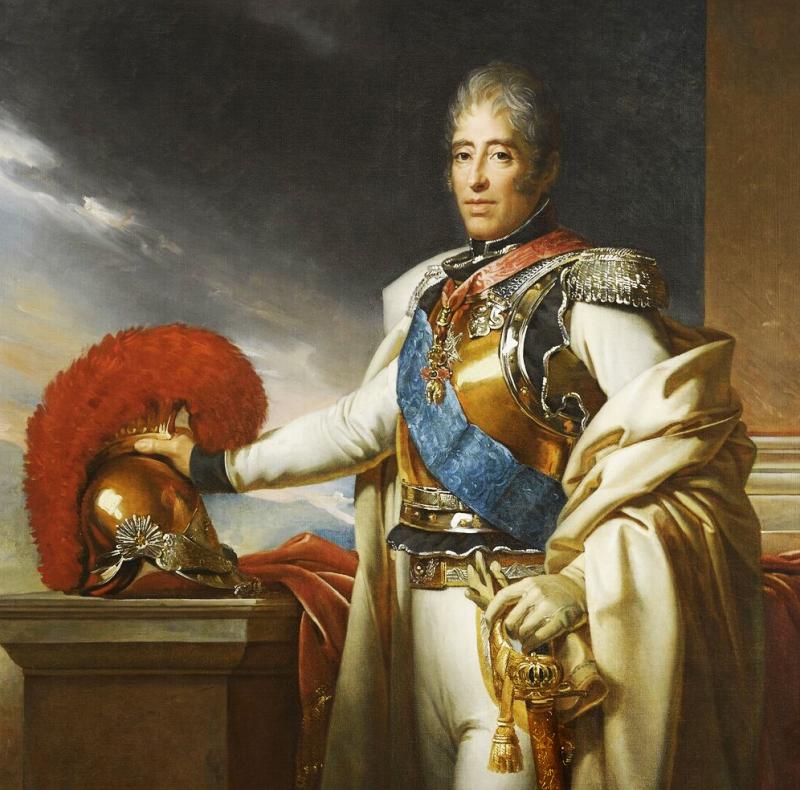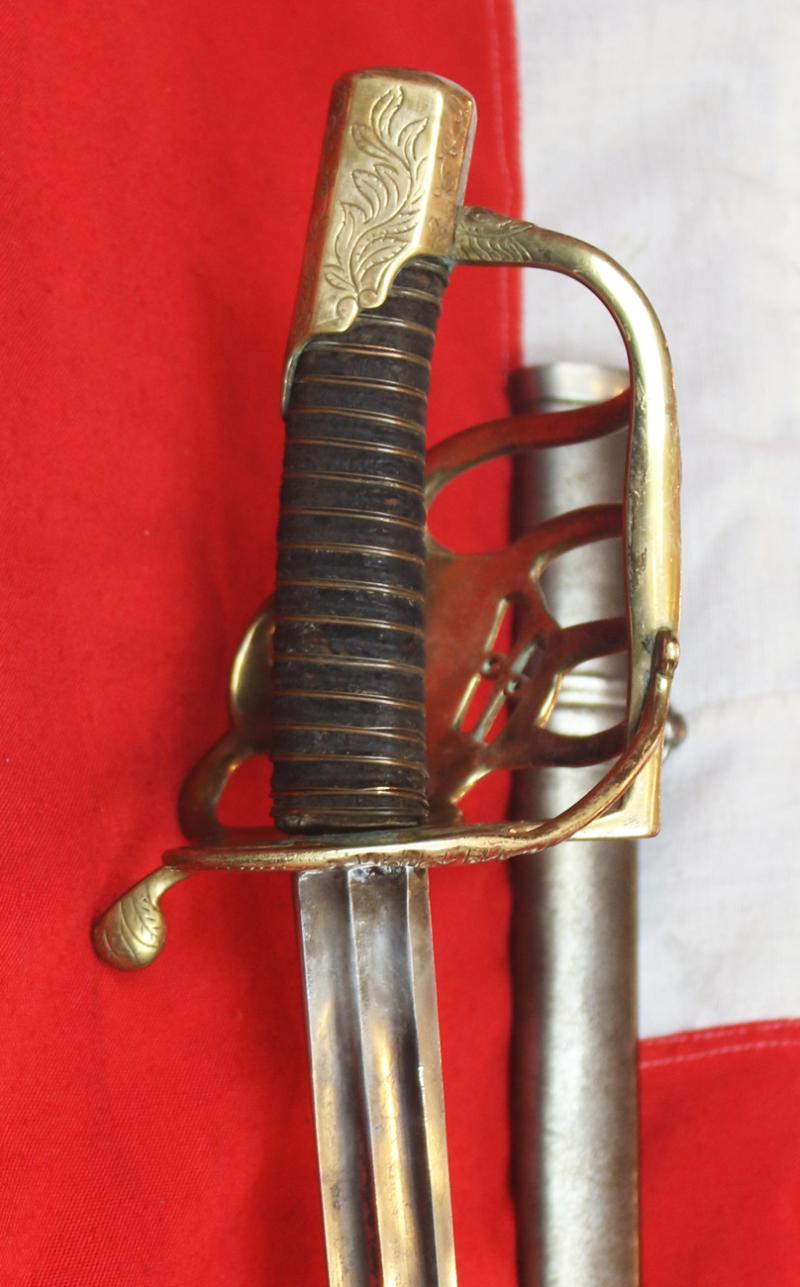Rare, Napoleonic Wars Sabre of an Officer of The Grande Armee Carabiniers De Cheval Ist Empire, a Garde de Bataille
Traditional brass fully engraved shell guard pattern also for use by an officer of cuirassiers, but, with two very small holes within the shell, for the addition of a carabiniers grenade, but the grenade could be then removed {as was this one} if the officer transferred to the cuirassiers. Sword manufactured circa 1805
Double fuller blade and steel combat scabbard with two belted rings. Small wear hole at the base of the inner scabbard above the chape.
The 1st and 2nd Carabiniers-à-Cheval were created in 1788, as regiments of heavy cavalry. They participated with distinction to the French Revolutionary Wars and Napoleonic Wars. Their uniform was described by the Etat militaire de l'an X (1802): "National blue costume and scarlet lapels, blue collar, bearskin hat, yellow bandolier and belt, with white plait on the edges. Horse equipage: saddle à la française, blue cover with white plait on the edges, a grenade in the corners, the ornaments of the bridle stamped with a grenade." Before 1810, the Carabiniers-à-Cheval did not wear a cuirass.
The decree of 24 December 1809 altered the uniform of the carabiniers: to, a white costume, double steel cuirass (breastplate and backplate) covered with brass sheathing (copper for officers), helmet with a peak and which covered the back of the neck, with a golden-yellow copper crest decorated with a chenille made of scarlet bristle. Their armament for other ranks included a carbine, a sabre (straight-bladed before c. 1811, then "a la Montmorency" – with a very slight curve) and a pair of pistols.
All of Napoleon's Heavy Cavalry Regiments fought at Waterloo, there were no reserve regiments. Some of the battles this would have been used at were; 1805: Wertingen, Ulm, Hollabrunn, Raussnitz, and Austerlitz.
1806: Jena and the Capture of Lubeck.
1807: Hoff and Eylau.
1809: Eckmuhl, Ratisbonne, Essling, Wagram, Hollabrunn, and Znaim.
1812: Borodino and Moscow, Ostrowno, and Winkowo 1813: Reichenbach and Dresden, Leipzig and Hanau
1814: La Rothiere, Rosnay, Champaubert, Vauchamps, Athies, La Fere-Champenoise and Paris
1815: Quatre-Bras and Waterloo
This would have seen service in the Elite Carabiniers of Napoleon's great heavy cavalry regiments of the Grande Armee such as in 1807 at Friedland. And in the French invasion of Russia ( Campagne de Russie) that began on 24 June 1812 when Napoleon's Grande Armee crossed the Neman River in an attempt to engage and defeat the Russian army. Napoleon hoped to compel Tsar Alexander I of Russia to cease trading with British merchants through proxies in an effort to pressure the United Kingdom to sue for peace. The official political aim of the campaign was to liberate Poland from the threat of Russia. Napoleon named the campaign the Second Polish War to curry favour with the Poles and provide a political pretence for his actions. The Grande Armee was a very large force, numbering nearly half a million men from several different nations. Through a series of long marches Napoleon pushed the army rapidly through Western Russia in an attempt to bring the Russian army to battle, winning a number of minor engagements and a major battle at Smolensk in August. Napoleon hoped the battle would mean an end of the march into Russia, but the Russian army slipped away from the engagement and continued to retreat into Russia, while leaving Smolensk to burn. Plans Napoleon had made to quarter at Smolensk were abandoned, and he pressed his army on after the Russians. The battles continued, but once the winter set in Napoleon's army was facing insurmountable odds that left it effectively shattered beyond repair. Napoleon fled, it is said, dressed as a woman, and the army left to it's sad and miserable fate. Only around 27,000 were able to return after a mere six months of the Russian campaign. The campaign was a turning point in the Napoleonic Wars. The reputation of Napoleon was severely shaken, and French hegemony in Europe was dramatically weakened.
The Grande Armee, made up of French and allied invasion forces, was reduced to a fraction of its initial strength. These events triggered a major shift in European politics. France's ally Prussia, soon followed by Austria, broke their alliance with France and switched camps. This triggered the War of the Sixth Coalition. The Heavy Cavalry Regiments used the largest men in France, recruited to serve in the greatest and noblest cavalry France has ever had. They fought with distinction at their last great conflict at the Battle of Waterloo in 1815, and most of the swords in England very likely came from that field of conflict, after the battle, as trophies of war.
Every warrior that has ever entered service for his country sought trophies. The Mycenae from a fallen Trojan, the Roman from a fallen Gaul, the GI from a fallen Japanese, the tradition stretches back thousands of years, and will continue as long as man serves his country in battle. In the 1st century AD the Roman Poet Decimus Iunius Iuvenalis Juvenal
wrote; "Man thirsts more for glory than virtue. The armour of an enemy, his broken helmet, the flag ripped from a conquered trireme, are treasures valued beyond all human riches. It is to obtain these tokens of glory that Generals, be they Roman, Greek or barbarian, brave a thousand perils
and endure a thousand exertions". A truly magnificent Napoleonic sword in superb condition for it's age.
The brass basket guard on this sword is first class, the grip is totally original leather and a great colour
Code: 25275



